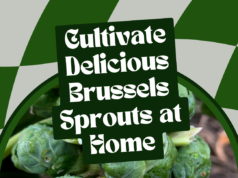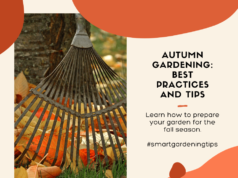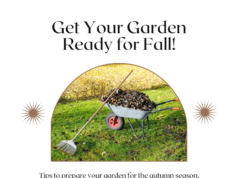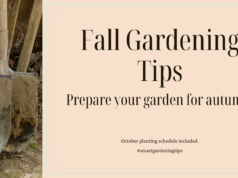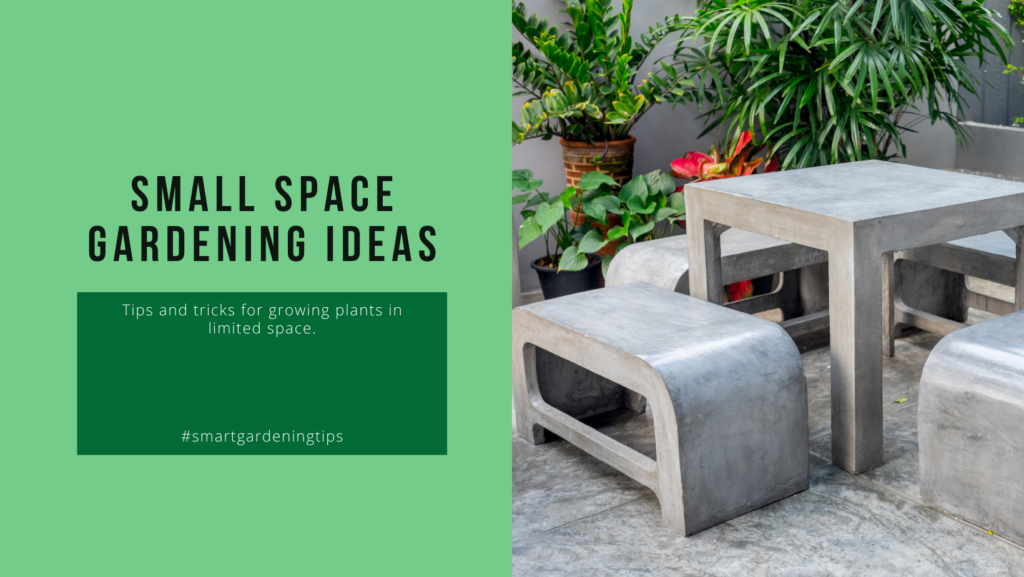
Welcome to our article on small space gardening ideas! If you have a small balcony, a tiny backyard, or even just a windowsill, we have creative solutions to help you transform your limited space into a beautiful and productive garden. In this article, we will explore different techniques, designs, and plants that are perfect for maximizing small spaces and creating a lush oasis.
Key Takeaways:
- Discover creative ideas to maximize small spaces for gardening.
- Explore the benefits of gardening in limited areas.
- Learn about vertical gardening and how to create your own vertical garden.
- Get tips on container gardening basics and appropriate plant selection.
- Find out the best plants for small space container gardening.
The benefits of small space gardening.
Small space gardening offers numerous benefits. Whether you have a compact balcony, a tiny backyard, or even just a windowsill, gardening in limited spaces allows you to create a beautiful and productive garden. In this section, we will explore the many advantages of gardening in small spaces.
- Enjoy the Beauty of Plants: Small space gardens can be just as stunning as larger ones. Regardless of the size, you can fill your space with vibrant flowers, lush greenery, and even edible plants.
- Grow Your Own Food: One of the greatest benefits of small space gardening is the ability to grow your own food. Even in limited areas, you can cultivate a variety of fruits, vegetables, herbs, and spices, providing you with fresh and organic produce.
- Reduce Stress: Gardening has been proven to reduce stress and promote relaxation. The act of nurturing plants and witnessing their growth can have a calming effect on the mind and body.
- Improve Air Quality: Plants naturally purify the air by absorbing carbon dioxide and releasing oxygen. By gardening in small spaces, you can enhance the air quality around you, creating a healthier and more refreshing environment.
- Connect with Nature: Small space gardens allow you to connect with nature even in urban or confined settings. Spending time outdoors, tending to plants, and observing wildlife can provide a sense of tranquility and a deeper appreciation for the natural world.
Small space gardening is not just about the physical benefits; it is a holistic practice that nurtures your well-being and strengthens your bond with nature.
With the immense benefits it offers, small space gardening is a rewarding and fulfilling pursuit. Whether you are a seasoned gardener or a novice, creating a small garden in limited areas can bring joy, beauty, and a sense of accomplishment to your life.
| Benefits | Description |
|---|---|
| Enjoy the Beauty of Plants | Small space gardens can be just as stunning as larger ones. Fill your space with vibrant flowers, lush greenery, and even edible plants. |
| Grow Your Own Food | Even in limited areas, you can cultivate a variety of fruits, vegetables, herbs, and spices, providing you with fresh and organic produce. |
| Reduce Stress | Gardening has been proven to reduce stress and promote relaxation. The act of nurturing plants and witnessing their growth can have a calming effect on the mind and body. |
| Improve Air Quality | Plants naturally purify the air by absorbing carbon dioxide and releasing oxygen. Gardening in small spaces enhances the air quality around you. |
| Connect with Nature | Even in urban settings, small space gardens allow you to connect with nature. Spending time outdoors and observing wildlife provides a sense of tranquility. |
Vertical gardening in limited spaces.
When it comes to gardening in limited spaces, vertical gardening is your secret weapon. By cleverly utilizing walls, fences, and trellises, you can transform any small area into a green oasis. The advantages of vertical gardening are numerous, making it an ideal solution for those with restricted space.
Let’s take a closer look at the benefits:
- Maximizes growing area: Vertical gardening allows you to grow plants upwards, taking advantage of the vertical space that might otherwise go unused.
- Increased plant variety: With vertical gardening, you can easily grow a wide variety of plants, including herbs, vegetables, flowers, and even small fruit-bearing plants.
- Improved aesthetics: Vertical gardens create a stunning visual display, adding a touch of beauty and serenity to any limited space.
- Better air circulation: Plants grown vertically allow for improved air circulation, reducing the risk of plant diseases and promoting healthier growth.
- Optimal sunlight exposure: By positioning your vertical garden strategically, you can ensure that each plant receives optimal sunlight, helping them thrive.
- Easy maintenance: Vertical gardens are often easier to maintain compared to traditional gardens, saving you time and effort.
- Accessibility: With plants grown vertically, it’s easier to reach and harvest your produce, making it convenient for urban gardeners with limited mobility.
To create your own vertical garden in limited spaces, consider these tips:
- Choose the right plants: Select plants that are well-suited for vertical growth, such as vining plants and those with lightweight structures.
- Install sturdy support structures: Invest in strong trellises, stakes, or wall-mounted planters to ensure stability and withstand the weight of the plants.
- Consider irrigation: Depending on the type of plants you choose, consider installing a drip irrigation system or use self-watering containers to simplify watering tasks.
- Ensure adequate lighting: Place your vertical garden in an area that receives sufficient sunlight or use supplemental grow lights for plants that require more light.
- Monitor and maintain: Regularly check the health of your vertical garden, prune as necessary, and provide proper nutrition for optimal growth.
“Vertical gardens are a game-changer for small space gardening. They allow us to take advantage of every inch of available space and create beautiful, functional gardens even in the most limited areas.” – Sarah Green, Urban Gardening Expert
To visually illustrate the concept of vertical gardening, take a look at this image:
| Advantages of Vertical Gardening | Description |
|---|---|
| Maximizes growing area | Utilizes vertical space to increase planting capacity |
| Increased plant variety | Grows a wide range of plants in a small area |
| Improved aesthetics | Creates a visually appealing garden design |
| Better air circulation | Enhances airflow for healthier plants |
| Optimal sunlight exposure | Ensures each plant receives adequate sunlight |
| Easy maintenance | Simplifies gardening tasks and upkeep |
| Accessibility | Makes harvesting easier, even for those with limited mobility |
Container gardening basics.
Container gardening is an excellent option for small spaces, allowing you to cultivate thriving plants in pots, containers, or raised beds. Whether you have a tiny balcony, a compact patio, or just a windowsill, container gardening offers a flexible and versatile solution to bring greenery into your surroundings.
When it comes to container gardening basics, there are a few key considerations to keep in mind.
Choosing Suitable Containers
First and foremost, selecting the right containers is essential for successful container gardening. Look for containers that have adequate drainage holes to prevent waterlogging and ensure root health. Opt for containers made from durable materials such as plastic, ceramic, or terracotta, which can withstand varying weather conditions.
Selecting the Right Soil
The soil plays a crucial role in container gardening, as it provides essential nutrients and supports plant growth. Use a high-quality potting mix that is well-draining and rich in organic matter. Avoid using garden soil, as it can become compacted in containers and hinder adequate water flow.
Watering Techniques
Proper watering is vital for container plants, as they can dry out more quickly than plants in traditional gardens. Regularly monitor the moisture level of the soil and water your plants when the top inch of soil feels dry to the touch. Ensure thorough watering until the excess water drains out from the bottom of the container to prevent water accumulation.
Plant Selection
When choosing plants for container gardening, consider their size, growth habits, and light requirements. Opt for compact and dwarf varieties that are well-suited to small spaces. Additionally, select plants that have similar water and light requirements, allowing for easy maintenance and care.
Remember, container gardening allows you to get creative and experiment with various plant combinations. Mix different colors, textures, and heights to create a visually appealing and vibrant container garden.
By following these container gardening basics, you can create a flourishing garden even in the smallest of spaces. The table below provides a quick overview of the key container gardening basics:
| Container Gardening Basics | Description |
|---|---|
| Choosing Suitable Containers | Select containers with proper drainage and durable materials like plastic, ceramic, or terracotta. |
| Selecting the Right Soil | Use a high-quality potting mix that is well-draining and rich in organic matter. |
| Watering Techniques | Regularly monitor soil moisture and water when the top inch of soil feels dry to the touch. |
| Plant Selection | Choose compact and dwarf varieties with similar water and light requirements for easy maintenance. |
With the right containers, soil, watering techniques, and plant selection, you can create a stunning container garden in even the most limited spaces. Stay tuned for our next section, where we’ll explore the best plants for container gardening in small spaces.
Best plants for container gardening in small spaces.
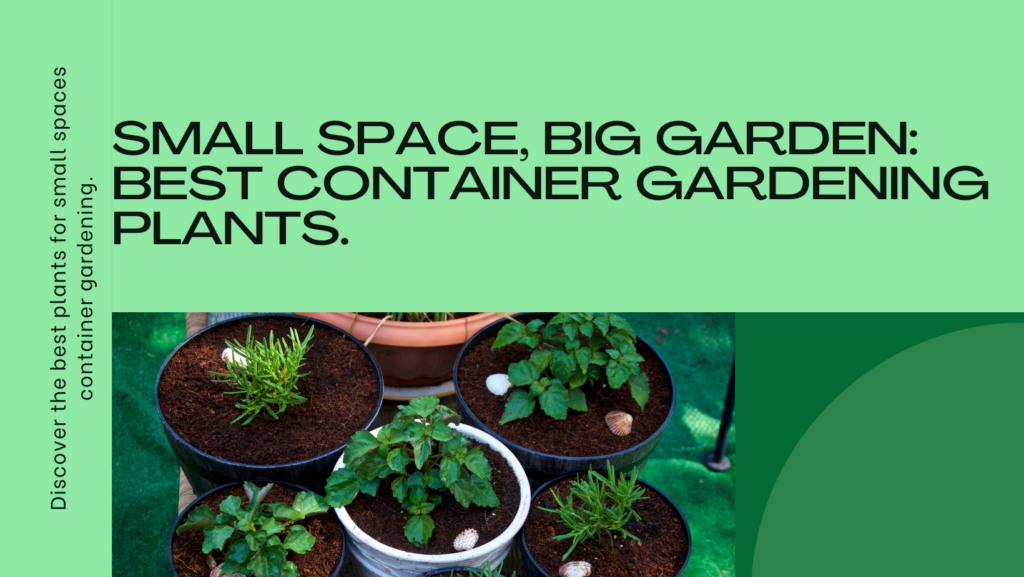
When it comes to small space gardening, choosing the right plants is essential for success. Not all plants thrive in limited areas, but there are many varieties that are well-suited for container gardening. Whether you have a small balcony, a compact patio, or a tiny backyard, these plants will bring beauty and productivity to your space. Here are some of the best plants for container gardening in small spaces:
1. Herbs:
Growing herbs in containers is a fantastic way to add flavor and freshness to your small space. Try planting herbs like basil, rosemary, thyme, and mint. They not only provide delicious culinary additions but also have a lovely aroma.
2. Vegetables:
Container gardening allows you to grow your own fresh vegetables, even in limited spaces. Consider planting compact varieties like cherry tomatoes, peppers, lettuce, and carrots. These vegetables thrive in pots and can produce a bountiful harvest.
3. Flowers:
Add vibrant colors and beautiful blooms to your small space with container-grown flowers. Opt for low-growing varieties like petunias, marigolds, pansies, and impatiens. These flowers will bring life and visual appeal to any corner of your garden.
4. Dwarf Fruit Trees:
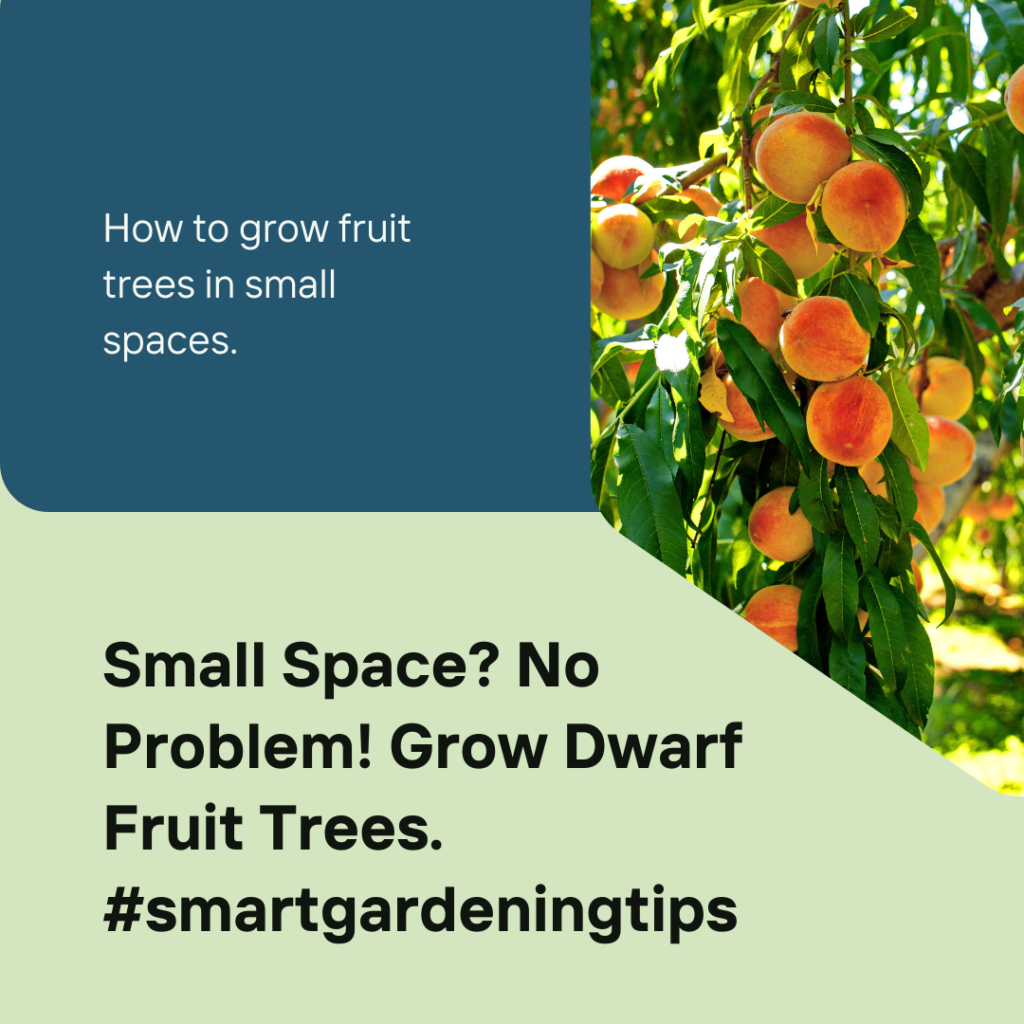
If you have a small space but still dream of growing your own fruit, consider dwarf fruit trees. These compact trees, such as dwarf apple or peach trees, can be grown in containers on a patio or balcony. Enjoy fresh fruits right from your own garden!
Remember, when selecting plants for container gardening in small spaces, consider their growth habits, water requirements, and sunlight needs. Ensure the containers have proper drainage to avoid waterlogging, and use high-quality potting soil for optimal plant health.
| Plant | Light Requirements | Watering Needs | Special Considerations |
|---|---|---|---|
| Herbs | Full sun to partial shade | Regular watering | Pinching to promote bushy growth |
| Vegetables | Full sun | Regular watering | Spacing requirements for proper growth |
| Flowers | Varies by species | Varies by species | Deadheading for continuous blooms |
| Dwarf Fruit Trees | Full sun | Regular watering | Choosing self-pollinating varieties |
With careful selection and proper care, these best plants for container gardening in small spaces will thrive and bring joy to your garden throughout the seasons. Experiment with different combinations and create a lush oasis in even the tiniest of spaces.
Next, we will explore the techniques and strategies for successful indoor gardening, allowing you to expand your green thumb even further. Get ready to bring nature indoors and create a thriving garden right in the comfort of your own home.
Indoor gardening techniques.
If you have limited outdoor space, don’t worry! You can still enjoy the benefits of gardening by creating an indoor garden. Indoor gardening allows you to cultivate plants right in the comfort of your own home, bringing nature indoors and adding beauty to any space. Not only does it allow you to grow your own fresh herbs and vegetables, but it also provides numerous mental and physical health benefits.
Indoor gardening techniques have evolved over time to accommodate the unique needs of plants grown in confined spaces. There are several popular techniques that you can use to create a thriving indoor garden:
1. Hydroponics
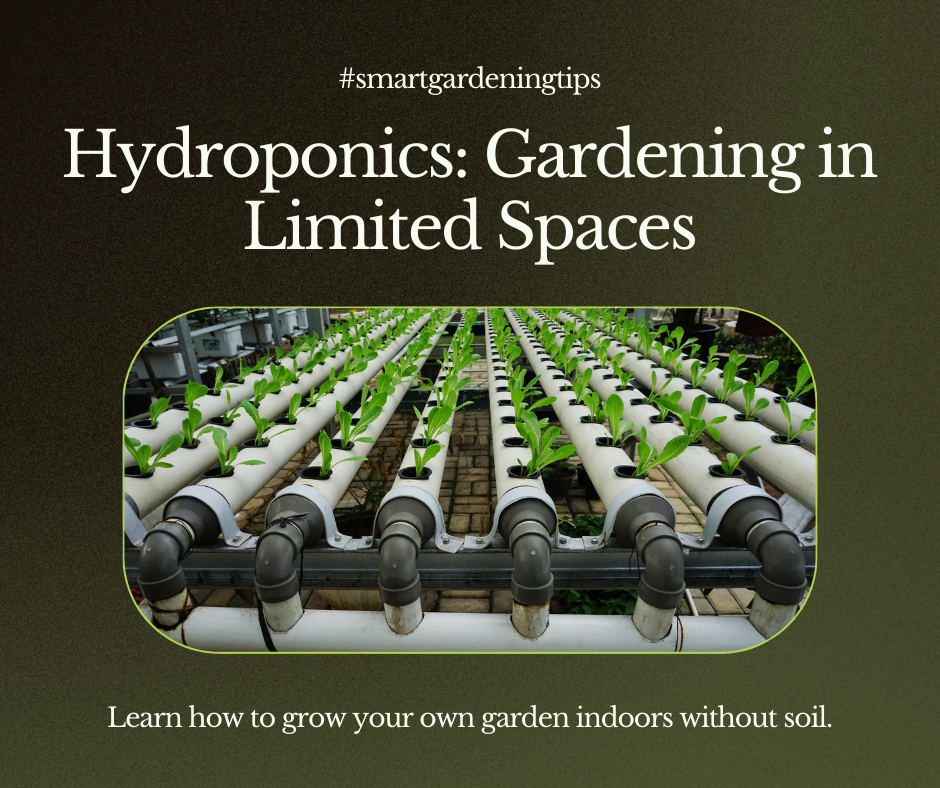
Hydroponics is a soil-less gardening technique that involves growing plants in a nutrient-rich water solution. This method utilizes a variety of mediums like perlite, coco coir, or rockwool to support the plant roots. With hydroponics, you have precise control over water and nutrient levels, allowing plants to grow faster and more efficiently compared to traditional soil gardening.
2. Aeroponics
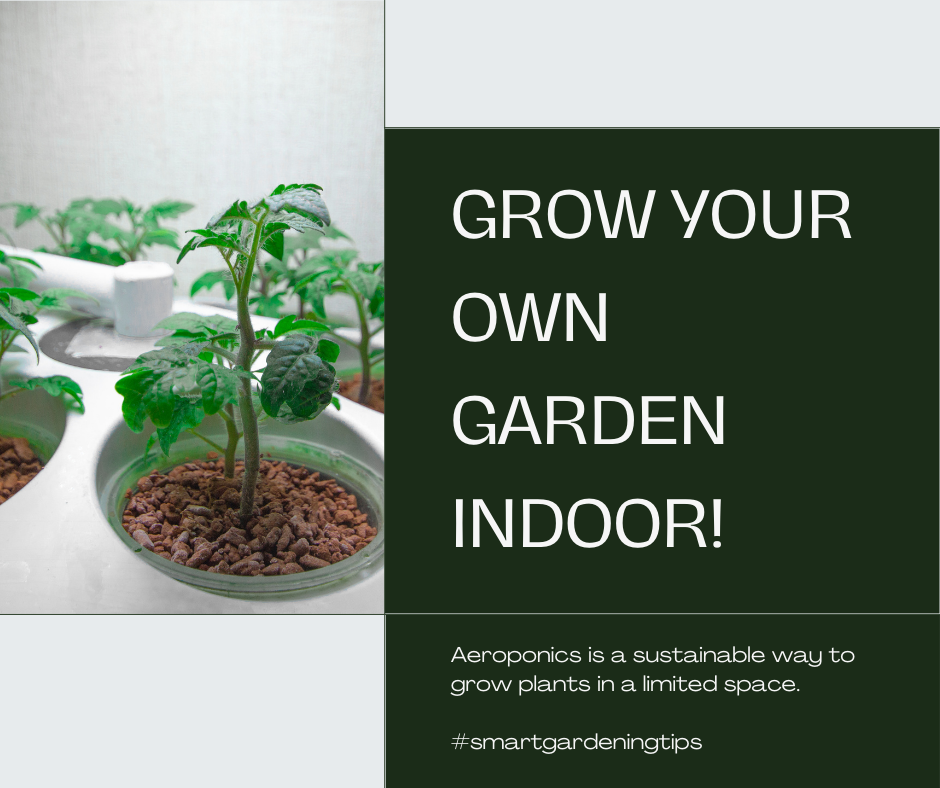
Aeroponics is a cutting-edge indoor gardening technique where plants are grown in an air or mist environment. The plant roots are suspended in the air and are regularly misted with nutrient-rich water. This method promotes rapid growth and maximizes air circulation around the roots, resulting in healthier and faster-growing plants.
3. Traditional Pot Gardening
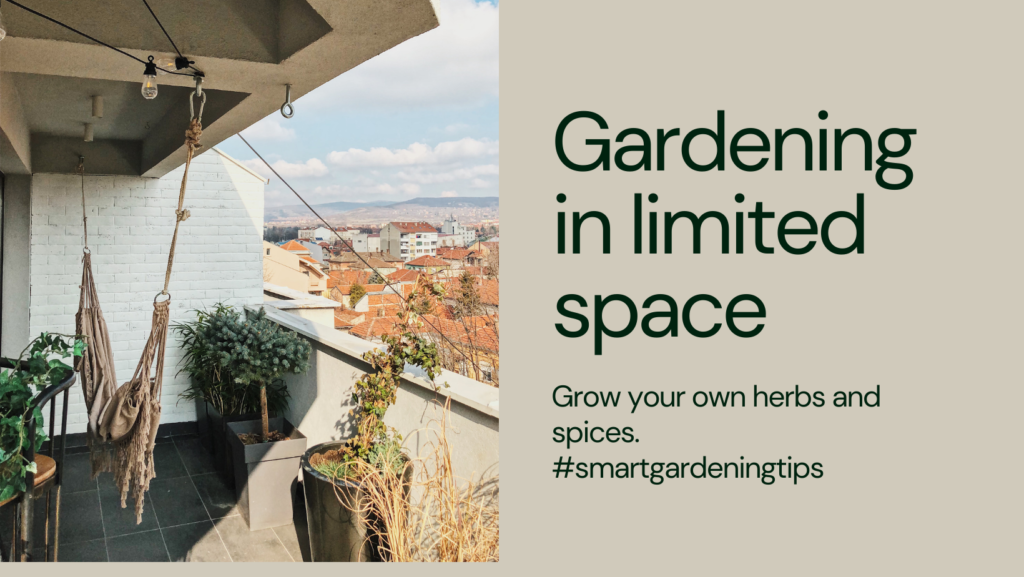
Traditional pot gardening is the most common indoor gardening technique. It involves growing plants in pots or containers filled with a suitable potting mix or soil. This method is versatile and suitable for a wide range of plants, making it perfect for beginners or those who prefer a more conventional approach to gardening.
Regardless of the indoor gardening technique you choose, it’s important to consider a few key factors for successful results:
- Lighting: Since indoor gardens don’t receive natural sunlight, providing adequate artificial lighting is crucial. Consider using full-spectrum grow lights that mimic the sun’s spectrum to ensure your plants receive the right amount and type of light.
- Temperature and Humidity: Different plants have varying temperature and humidity requirements. Make sure you place your indoor garden in an area with suitable conditions for the plants you’re growing.
- Watering and Fertilizing: Indoor plants might require more frequent and precise watering compared to outdoor plants. Additionally, use a specialized indoor plant fertilizer to ensure your plants receive the necessary nutrients.
Indoor gardening allows you to get creative with plant selection, from growing aromatic herbs like basil and mint to cultivating beautiful flowering plants such as orchids and peace lilies. Let your imagination soar as you design your indoor garden oasis.
“Bringing the beauty of nature indoors has a transformative effect on any space. Indoor gardening provides a sense of calm and serenity, and the act of nurturing plants brings joy and satisfaction.” – Jane Thompson, Indoor Gardening Enthusiast
Indoor gardening is not only a hobby but also a beneficial practice that enhances your well-being. By incorporating indoor gardening techniques into your home, you can experience the joy of gardening and reap the benefits of a greener and healthier environment.
Creative small space garden designs.
Ready to unlock your creative potential and transform your small space into a stunning garden oasis? In this section, we will showcase a variety of innovative small space garden designs that will inspire you to think outside the box. From vertical herb walls to charming hanging gardens, these designs will help you make the most of your limited space. Embrace your inner gardener and explore the possibilities!
Vertical Herb Wall
If you love fresh herbs but don’t have enough room for a traditional herb garden, a vertical herb wall is the perfect solution. Create a living wall of herbs by mounting rows of small planters on a sturdy frame or attaching them directly to a wall. This design not only saves valuable space but also adds a touch of botanical beauty to your surroundings.
Hanging Basket Garden
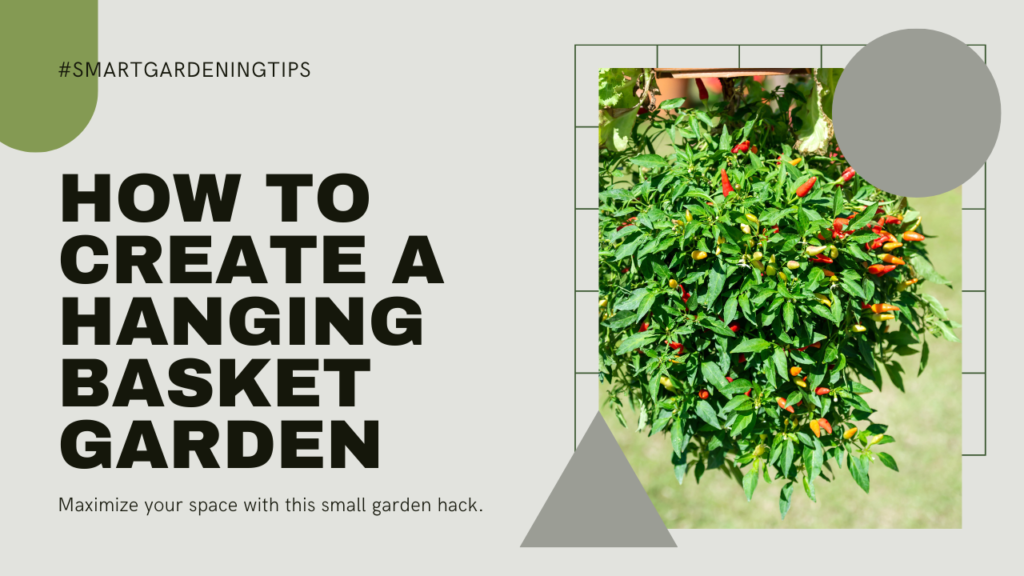
Bring your garden to new heights with a hanging basket garden. Choose a sunny spot and hang a variety of cascading plants, such as petunias, ivy, and trailing succulents, in decorative baskets. Not only will this design save space, but it will also create a captivating display that adds vertical interest to your small space.
Compact Container Garden
No garden is complete without containers, and a small space is no exception. Opt for compact containers with built-in trellises, allowing you to grow vine plants like tomatoes or cucumbers vertically. Arrange these containers strategically to maximize space and create an eye-catching focal point in your garden.
“In a garden, space is not measured in square feet but in perfumes, bird song, and memories.”
― Linda Solegato
Floating Shelf Garden
Utilize unused wall space by installing floating shelves that can hold an array of small potted plants and decorative accessories. This design is ideal for displaying a collection of succulents, cacti, or air plants, creating a chic and modern garden display. Let your imagination run wild as you curate your own unique floating shelf garden.
Tiered Plant Stand
A tiered plant stand is an excellent choice for small spaces, providing multiple levels for displaying a variety of plants. Opt for a stand with graduated shelves, arranging your plants from smallest to largest. This design not only saves space but also adds dimension and visual interest to your garden.
These are just a few of the many creative small space garden designs to inspire you. Remember, even the tiniest nooks and crannies can be transformed into thriving green spaces. Let your imagination soar and create a small space garden that reflects your unique style and personality.
| Garden Design | Description |
|---|---|
| Vertical Herb Wall | Create a living wall of herbs by mounting rows of small planters on a sturdy frame or attaching them directly to a wall. |
| Hanging Basket Garden | Hang a variety of cascading plants in decorative baskets to add vertical interest to your small space. |
| Compact Container Garden | Grow vine plants like tomatoes or cucumbers vertically in compact containers with built-in trellises. |
| Floating Shelf Garden | Install floating shelves on unused wall space to display small potted plants and decorative accessories. |
| Tiered Plant Stand | Use a tiered plant stand to display a variety of plants, creating dimension and visual interest. |
Maximizing space with vertical and hanging gardens.
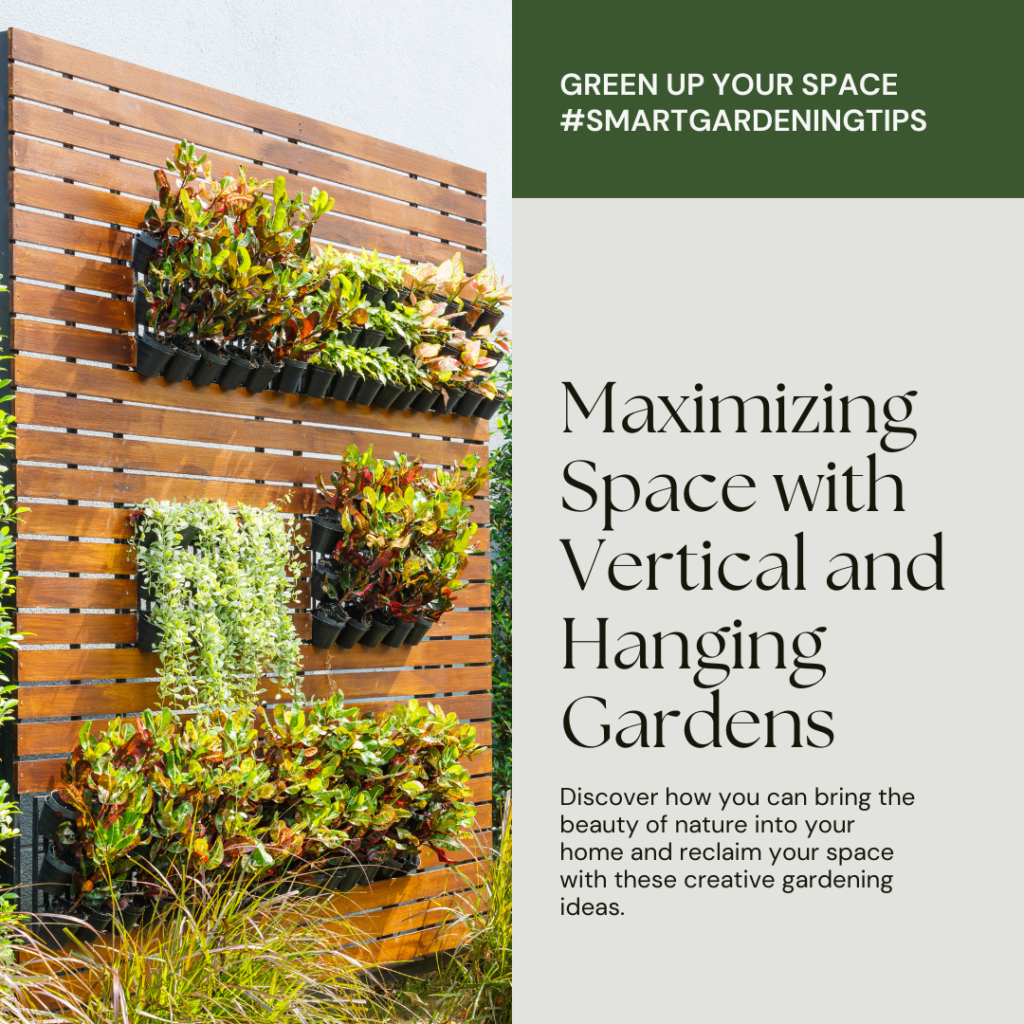
Building upon the previous section, we will now delve into practical tips on how to create an abundance of greenery in even the smallest of spaces by maximizing your area with vertical and hanging gardens. By utilizing walls, fences, balconies, and ceilings, you can transform your limited space into a lush garden oasis.
Create a Vertical Wonderland
If you have limited ground space, vertical gardening is the perfect solution. This technique allows you to grow plants upward, utilizing the vertical plane instead of spreading out horizontally. By doing so, you can maximize your growing area and create stunning visual displays.
Vertical gardens are not only functional, but they also add an aesthetic dimension to your outdoor or indoor space. They can be a work of art in their own right, transforming an otherwise plain wall into a vibrant canvas of greenery.
To get started with vertical gardening, consider the following:
- Select suitable plant varieties that thrive in vertical arrangements, such as ivy, herbs, succulents, or trailing vines.
- Choose the right containers or vertical gardening systems that provide proper support and drainage for your plants.
- Position plants strategically to ensure adequate sunlight and accessibility for maintenance.
Add Drama with Hanging Gardens
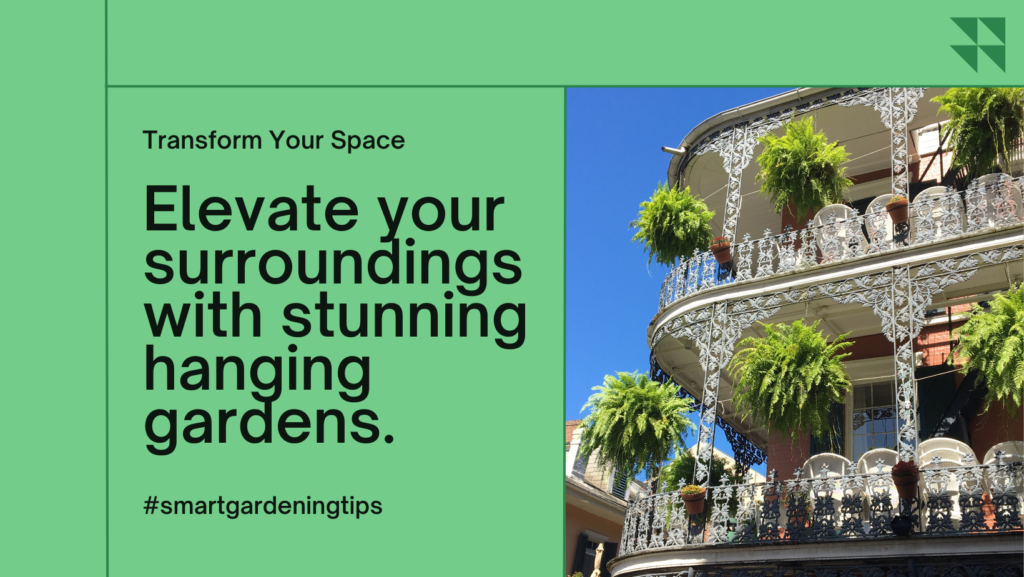
If you’re looking to add a touch of elegance and drama to your garden, hanging gardens are an excellent choice. By suspending plants from above, you can create captivating visual displays and make use of overhead space that would otherwise go unused.
Consider incorporating the following ideas for your hanging gardens:
- Hang flower baskets from external hooks or brackets placed along walls, fence posts, or pergolas.
- Use sturdy hooks or specialized hanging planters to suspend potted plants from ceilings or beams inside your home or on balconies.
- Combine different plant heights, colors, and textures to create a visually stunning arrangement.
Whether you choose vertical or hanging gardens, the key is to think creatively and utilize every available space in your small garden area. With some planning and imagination, you can transform your compact space into a thriving garden that defies its size.
To inspire you, here’s an image showcasing the beauty of maximizing space with vertical and hanging gardens:
By incorporating these techniques, you can have a flourishing garden that defies the limitations of a small space. In the next section, we will explore sustainable practices in small space gardening, helping you minimize waste and conserve resources for a greener, more eco-friendly garden.
Sustainable practices in small space gardening.
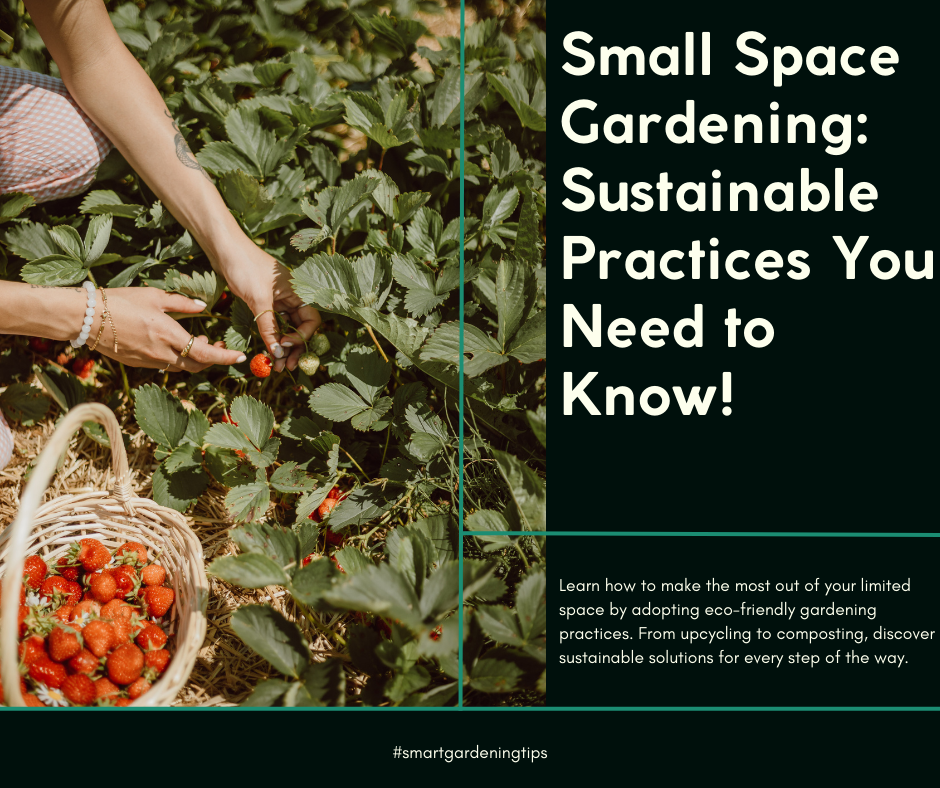
When it comes to small space gardening, sustainability is key. By implementing eco-friendly practices, you not only minimize waste but also contribute to the conservation of resources and the reduction of your carbon footprint. In this section, we will explore sustainable techniques that you can incorporate into your small space garden.
Composting in Small Space Gardens
Composting is a natural process that transforms organic waste into nutrient-rich soil, providing essential nourishment for your plants. Even in limited areas, you can still compost effectively. Consider using a compact compost bin or worm composting system to manage your kitchen scraps and garden waste. By diverting these materials from landfills, you contribute to the reduction of methane emissions and create a sustainable cycle of plant growth.
Water-Saving Techniques for Small Space Gardening
Water conservation is crucial, especially in small space gardening where resources may be more limited. Adopting water-saving techniques not only benefits the environment but also helps you maintain a thriving garden. Consider implementing the following practices:
- Collect and reuse rainwater by installing a rain barrel or using a water collection system.
- Utilize drip irrigation or soaker hoses to provide water directly to the roots, minimizing water evaporation.
- Apply mulch around your plants to retain moisture and suppress weed growth.
- Water your garden during the early morning or late evening to reduce water loss through evaporation.
Incorporating these water-saving techniques will not only conserve water but also save you time and effort in the long run.
The Benefits of Sustainable Small Space Gardening
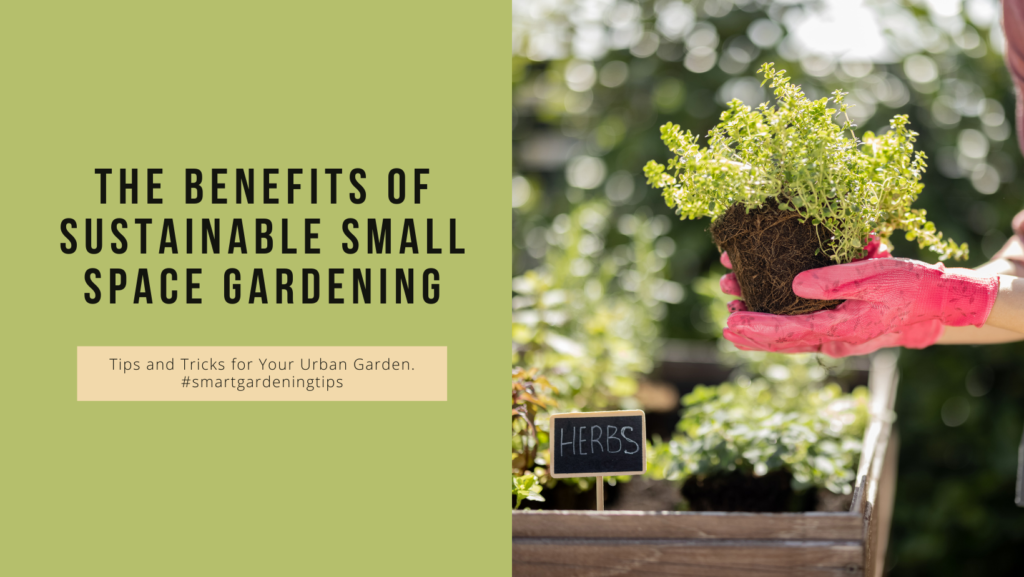
“Sustainable gardening is not only about preserving the environment; it’s about creating a harmonious relationship between plants, humans, and the ecosystem.”
By practicing sustainable gardening in small spaces, you contribute to a healthier planet while enjoying a range of benefits, including:
- Growing organic, pesticide-free produce for a healthier diet.
- Reducing your reliance on store-bought produce, minimizing transportation-related carbon emissions.
- Creating a natural habitat for local wildlife, promoting biodiversity.
- Connecting with nature and fostering a sense of well-being and mindfulness.
Embracing sustainable practices in your small space garden is a wonderful way to make a positive impact on the environment and enjoy the rewards of a thriving and resilient garden.
| Sustainable Practices | Benefits |
|---|---|
| Composting | Nutrient-rich soil for plants |
| Water-saving techniques | Conserves water and saves time |
| Organic gardening | Healthier produce and reduced carbon emissions |
| Promoting biodiversity | Natural habitat for wildlife |
| Mindfulness and well-being | Connection with nature |
Composting in small space gardens.
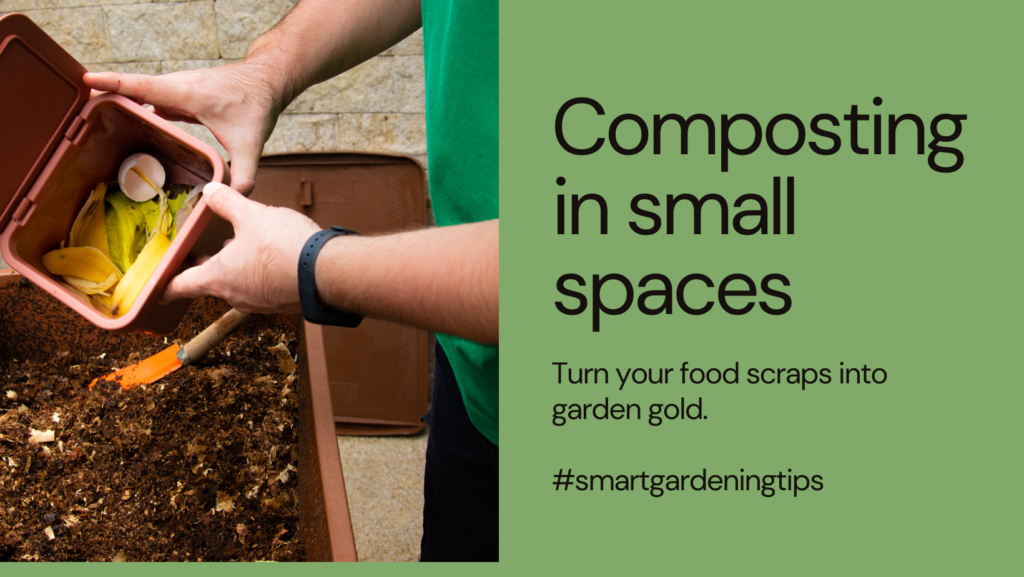
Composting is a vital practice in any garden, including small space gardens. It allows you to turn kitchen scraps and garden waste into nutrient-rich compost that nourishes your plants, reduces waste, and saves money on fertilizers. Even if you have limited areas, you can still compost effectively and contribute to a more sustainable gardening approach.
The Benefits of Composting
Composting offers several benefits for small space gardens:
- Nutrient-rich soil: Compost enriches the soil by providing essential nutrients and improving its structure, resulting in healthier and more productive plants.
- Waste reduction: Composting diverts kitchen scraps and yard waste from landfills, reducing the environmental impact and contributing to a more sustainable lifestyle.
- Cost savings: Compost is a free and natural fertilizer that eliminates the need to purchase synthetic fertilizers, saving you money in the long run.
Composting in Limited Areas
While large compost bins may not be feasible in small spaces, there are alternative methods to compost effectively:
- Vermicomposting: Also known as worm composting, this method involves using worms to decompose organic matter. It is compact and can be done indoors or outdoors, making it a perfect solution for small spaces.
- Bokashi composting: Bokashi is a fermentation process that uses beneficial microorganisms to break down organic waste. It requires a small airtight container and is odorless, making it suitable for indoor composting.
- Compost tumblers: These are small, self-contained units that allow for composting in limited areas. The rotating design accelerates the decomposition process, producing compost faster than traditional methods.
Regardless of the method you choose, remember the basic principles of composting:
Combine a mix of browns (carbon-rich materials like dried leaves or shredded paper) and greens (nitrogen-rich materials like fruit peels or grass clippings) in the right ratio. Keep the compost moist but not waterlogged, and turn it regularly to ensure proper aeration. With patience and care, you will have a steady supply of nutrient-rich compost to nourish your small space garden.
The Composting Process Visualized
| Materials for Composting | Do’s | Don’ts |
|---|---|---|
| Browns (Carbon-rich materials) | Leaves | Glossy paper |
| Greens (Nitrogen-rich materials) | Fruit peels | Meat or fish scraps |
| Moisture | Sprinkle water | Saturate with excess water |
| Aeration | Turn the compost pile regularly | Ignore or compact the pile |
Remember, composting is an ongoing process. It may take several months for the organic matter to decompose fully. Be patient, and soon you’ll have nutrient-rich compost that will enhance the health and vitality of your small space garden.
Water-saving techniques for small space gardening.
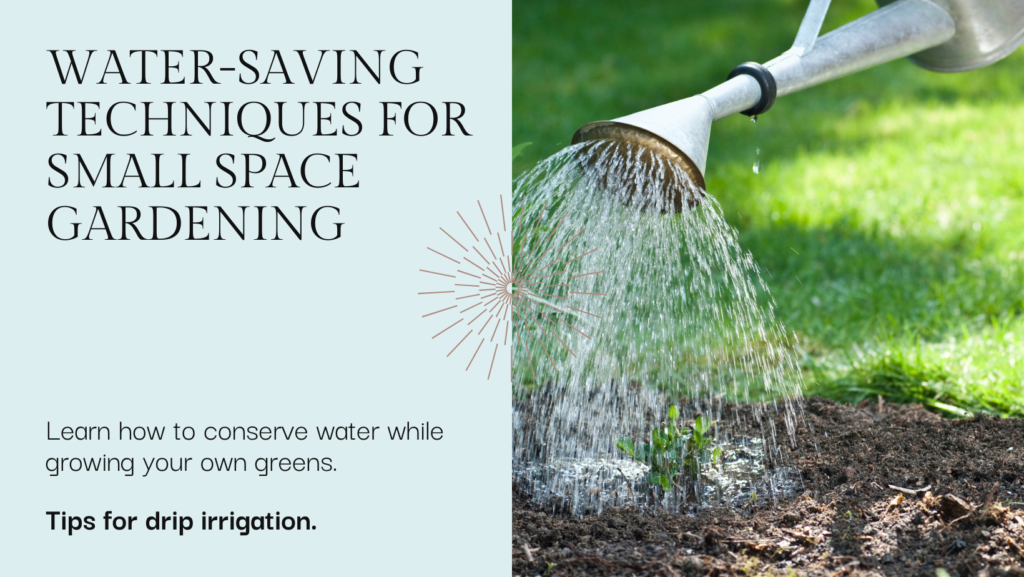
Conserving water is crucial, especially in small space gardening where resources may be more limited. By implementing water-saving techniques, you can reduce water consumption and still have a thriving garden. Here are some practical tips and techniques to help you save water in your small space garden:
1. Efficient irrigation systems
Install efficient irrigation systems to ensure that water is distributed directly to the plants’ roots, minimizing water loss through evaporation or runoff. Drip irrigation systems or soaker hoses are ideal for small space gardens as they deliver water directly to the base of plants, optimizing water usage.
2. Proper watering methods
Use smart watering techniques to prevent water waste. Water your plants during cooler times of the day, such as early morning or evening, to minimize evaporation. Avoid overhead watering, which can lead to water loss through evaporation. Instead, water the soil around the base of the plants to target the roots directly.
3. Mulching
Mulching is a great way to conserve water in small space gardens. Apply a layer of organic mulch, such as straw or wood chips, around your plants to help retain moisture in the soil. Mulch acts as a barrier, preventing water evaporation and weed growth, while also adding nutrients to the soil over time.
4. Choose water-efficient plants
Select plants that are well-suited for dry conditions and require less water to thrive. Native plants and drought-tolerant varieties are excellent choices for small space gardening. They are adapted to your local climate and can withstand periods of limited water availability. Research the water requirements of different plant species before adding them to your garden.
5. Watering schedule
Establish a regular watering schedule based on your plants’ needs. Avoid overwatering, as it can lead to water wastage, plant diseases, and root rot. Monitor the moisture levels in the soil by inserting your finger into the soil up to the second knuckle. If the soil feels moist, delay watering. Only water when the soil is dry to a depth of one inch.
6. Rainwater harvesting
Take advantage of rainwater by setting up a rainwater harvesting system in your small space garden. Collecting rainwater in barrels or containers allows you to utilize a free and sustainable water source for your plants. Use the collected rainwater during dry periods to supplement your regular watering routine.
7. Group plants with similar water needs
Arrange your plants based on their water requirements. Grouping plants with similar water needs together allows you to provide targeted watering and avoid overwatering certain areas. This practice ensures efficient water usage and prevents water wastage.
8. Monitor and adjust
Regularly monitor your plants’ water needs and make adjustments accordingly. Pay attention to signs of stress, such as wilting or yellowing leaves, which may indicate that your plants need more water. On the other hand, if your plants are thriving and the soil is consistently moist, consider reducing the watering frequency to conserve water.
“Water is a precious resource, and by implementing water-saving techniques in your small space garden, you can make a significant impact in conserving water while still enjoying a thriving garden.”
Implementing these water-saving techniques in your small space garden will not only help conserve this valuable resource but also promote healthier plants and a more sustainable approach to gardening.
| Water-saving Techniques | Description |
|---|---|
| Efficient irrigation systems | Install drip irrigation or soaker hoses to minimize water loss. |
| Proper watering methods | Water plants during cooler times, target the roots directly. |
| Mulching | Apply organic mulch to retain moisture in the soil. |
| Choose water-efficient plants | Select native and drought-tolerant plants that require less water. |
| Watering schedule | Establish a regular watering schedule based on plant needs. |
| Rainwater harvesting | Collect and utilize rainwater for watering your plants. |
| Group plants with similar water needs | Arrange plants based on their water requirements to avoid overwatering. |
| Monitor and adjust | Regularly assess plants’ water needs and make necessary adjustments. |
FAQ
Q. What are the benefits of small space gardening?
Q. How can I do vertical gardening in limited spaces?
Q. What are the basics of container gardening?
Q. Which plants are best for container gardening in small spaces?
Q. How can I practice indoor gardening?
Q. What are some creative small space garden designs?
Q. How can I maximize space with vertical and hanging gardens?
Q. What are some sustainable practices in small space gardening?
Q. How can I compost in a small space garden?
Q. What are some water-saving techniques for small space gardening?
Conclusion
In conclusion, small space gardening offers a multitude of opportunities for growing plants and creating stunning gardens, regardless of the space limitations. Whether you have a small balcony, a tiny backyard, or even just a windowsill, you can transform your limited area into a thriving garden oasis.
Embrace the joys of small space gardening and enjoy the numerous benefits it brings to your life. Not only can you enjoy the beauty of plants, but you can also grow your own food, reduce stress, improve air quality, and connect with nature.
By following the ideas and techniques discussed in this article, you can unleash your creativity and design a unique and functional small space garden. From vertical gardening and container gardening to indoor techniques and sustainable practices, there are plenty of options to make the most of your limited space.


